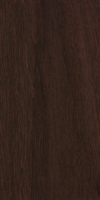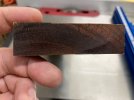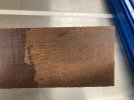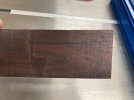Bühlmann
North Lake Forge
- Joined
- Jan 6, 2022
- Messages
- 475
I was given a box of smallish pieces “exotic” woods. Looks like most came from a Rockler or Woodcraft store and are labeled as such. Only one piece isn’t, and I thought I’d throw it out here to see what y’all think. I calculated it’s density at 73.94 lb/ft3, which brought me to what I think are three posssibles:
1. Kingwood
2. Brazilian Ebony (Coracao de Negro)
3. Katalox
It may be neither of the above What do you think?
What do you think?
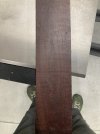
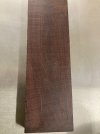
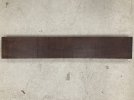
1. Kingwood
2. Brazilian Ebony (Coracao de Negro)
3. Katalox
It may be neither of the above




